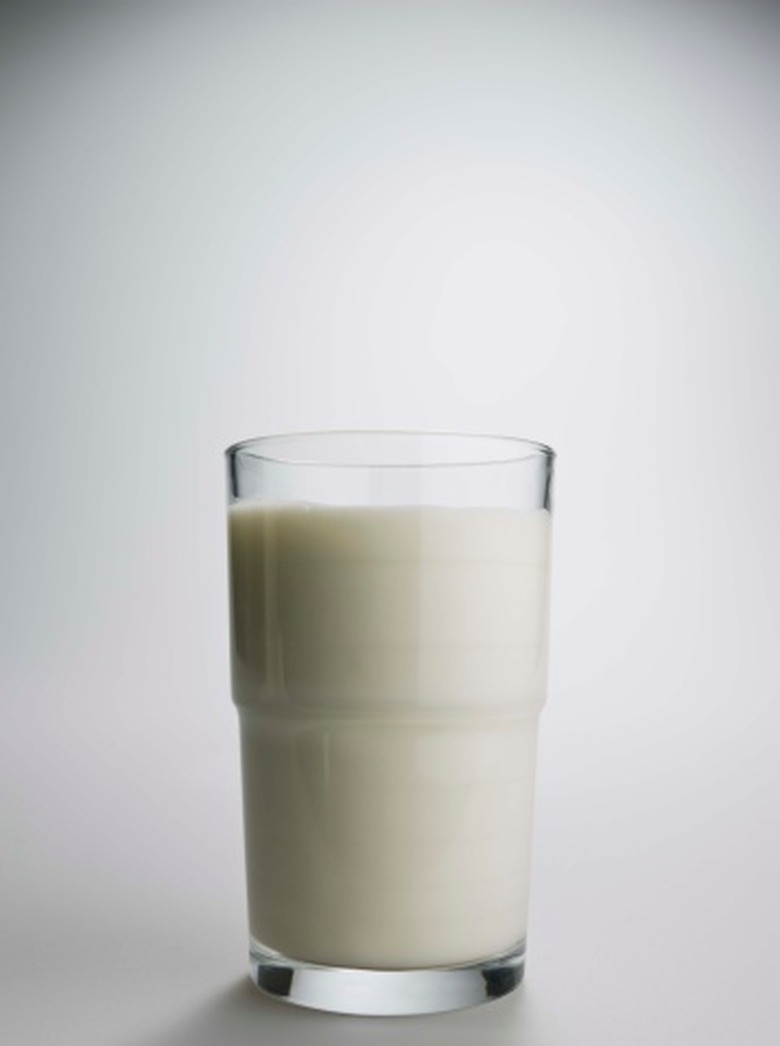Science Fair Projects On Milk & Food Coloring
Students who are learning about the properties of different compounds and mixtures can learn a lot from simple experiments that demonstrate the attraction, repulsion and solubility between certain elements. With a few items that can be found in any grocery store, including water, dish soap, milk and food coloring, students can create a variety of experiments to demonstrate physical properties of the items, and differences between different compounds of the same state, for a science fair project.
Understanding Liquid Properties
Understanding Liquid Properties
Students can present a variety of liquids, including milk, hot chocolate, tea and water. Ask judges to predict what will happen when blue food coloring is added to each item. Test the predictions by adding the blue food coloring to each liquid and allowing it to settle naturally without stirring. Record the results and determine the difference between predictions and actual results. Discuss why the food coloring behaved as it did in each medium. Students should include fat content, water percentage of composition and surface tension in their discussion.
Contact and Transfer
Contact and Transfer
Fill the bottom of a plate with 2% milk and place one drop of each tint of food coloring in the center, approximately one inch apart from each other. Ask observers to predict what will happen when a cotton swab is touched to the surface of the milk. Test the result by inserting the swab in the center of the food-coloring square. Students must be careful not to disturb the composition by stirring. Remove the swab and add one drop of dish soap. Place the swab in the milk again and explain the results.
Comparing Similar Media
Comparing Similar Media
After completing the experiment in the previous section, extend the experiment by designing an hypothesis on how the food coloring would interact in milk with higher or lower fat content. Complete research to determine how the fat content of milk will affect its surface tension and how that in turn will affect soap's ability to penetrate them. In the science fair presentation, include samples of each type of milk before and after soap penetration, and a graph demonstrating the relationship between fat content and amount of work required by the soap to break the surface tension.
pH Scale
pH Scale
Students can present the properties of acidic, basic and neutral pH liquids and discuss the results of their interactions with each other. Create combinations of an acid and base, acid and neutral, and a base with a neutral, which can be accomplished by adding soap to milk. Food coloring can be added to better demonstrate the results of these combinations. Discuss factors such as solubility, density and surface tension that affect the liquids' ability or inability to mix or penetrate each other.
Cite This Article
MLA
Tresor, Adelaide. "Science Fair Projects On Milk & Food Coloring" sciencing.com, https://www.sciencing.com/science-projects-milk-food-coloring-8407351/. 24 April 2017.
APA
Tresor, Adelaide. (2017, April 24). Science Fair Projects On Milk & Food Coloring. sciencing.com. Retrieved from https://www.sciencing.com/science-projects-milk-food-coloring-8407351/
Chicago
Tresor, Adelaide. Science Fair Projects On Milk & Food Coloring last modified August 30, 2022. https://www.sciencing.com/science-projects-milk-food-coloring-8407351/
